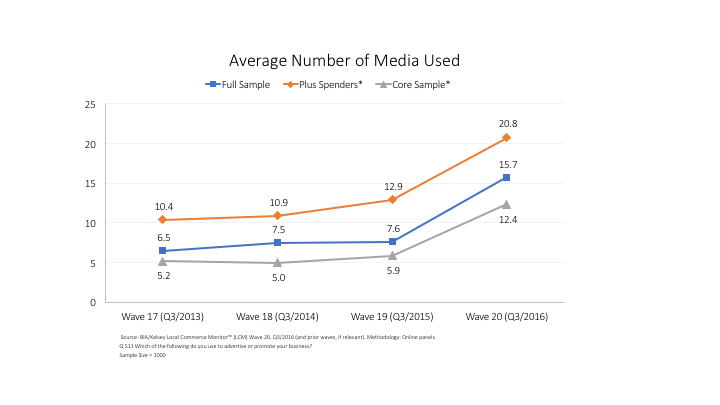On Monday, I walked through an analysis of automotive search spending in the top ten U.S. media markets. As you can see, there’s tremendous variability in local spending patterns by business speciality and channel. With so many local differences in search spending, marketers have the opportunity to target geographies, keywords and promotions in channels their compeititors ignore to capture customer attention. This is tactical data-driven marketing becoming mature.
In addition to picking established channels, such as direct mail, email, search, television, radio and many others, marketers can also track the emergence of new messaging technologies. These channels offer first-mover advantages, as early leaders in a channel can — though won’t necessarily — develop engaged relationships with influencers. These highly connected customers shape the flow of social activity in their channels. The emergence of YouTube stars, SnapChat personalities, Kim Kardashian and all the celebrity influence peddling that dominates social and late-night television, shows how a brand can develop partnerships with its social network influencers to raise awareness of their products or services.
BIA/Kelsey’s Local Commerce Monitor survey has tracked the growth of channels used by small and medium-sized businesses (SMB) for many years. Typically, SMBs have used about a half dozen channels. In recent years, however, we’ve seen a hockey stick phenomenon in channel growth. An inflection point has passed, and today’s top-spending SMBs (over $25,000 annually) are using as many as 20.8 channels. Meanwhile, the average SMB across all respondents, has seen their channel presence increase from 6.5 in LCM Wave 17 (2013) to 15.7 channels in 2016. Even low-spending SMBs, (below $25,000 annually) have more than doubled their channel usage over the same period.
We arrive at these figures by tracking the channels reported used throughout the survey instrument. We’ve also added several channels a year about which we explicitly ask — SnapChat was the newest channel identified by SMBs this year. The growth is a function of actual changes in the market, not just our having asked about more channels.
Marketers considering their strategic approach to a business category, geography or an individual channel should integrate findings like the channel analysis presented Monday and the potential to dominate a topic in a new channel, not simply one or the other. As multi-channel marketing successfully links instrumented campaigns, the addition of a channel can provide a brand new engagements that competitors are currently ignoring. If competitors are not using a channel, there may be a good reason, such as their historic struggles with the medium. After all, it took years to get Facebook marketing into useful shape — all that time, some brands stayed focused on the channel and retain large audiences today.
Opportunity conceals itself in data. Find the channels competitors don’t use and experiment with them. Identify emerging channels, such as SnapChat and, in 2017, voice assistants such as Amazon Alexa, Google Home, Apple’s Siri and Microsoft’s Cortana, and determine if there is a significant group of users talking about topics related to a brand. By experimenting in channels, assessing response rates and feedback, as well as subscriptions (RSS, email, desktop alerts), marketers can use data to find untapped customer attention.

